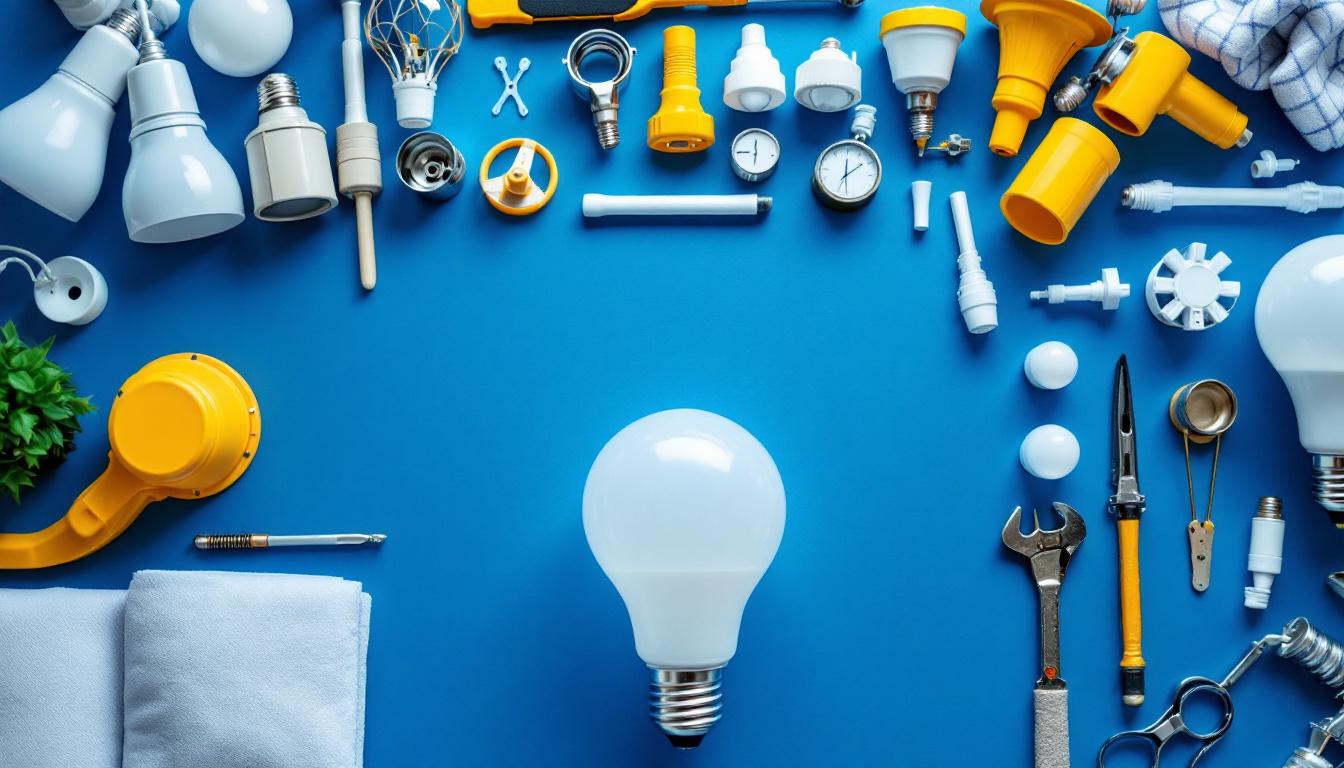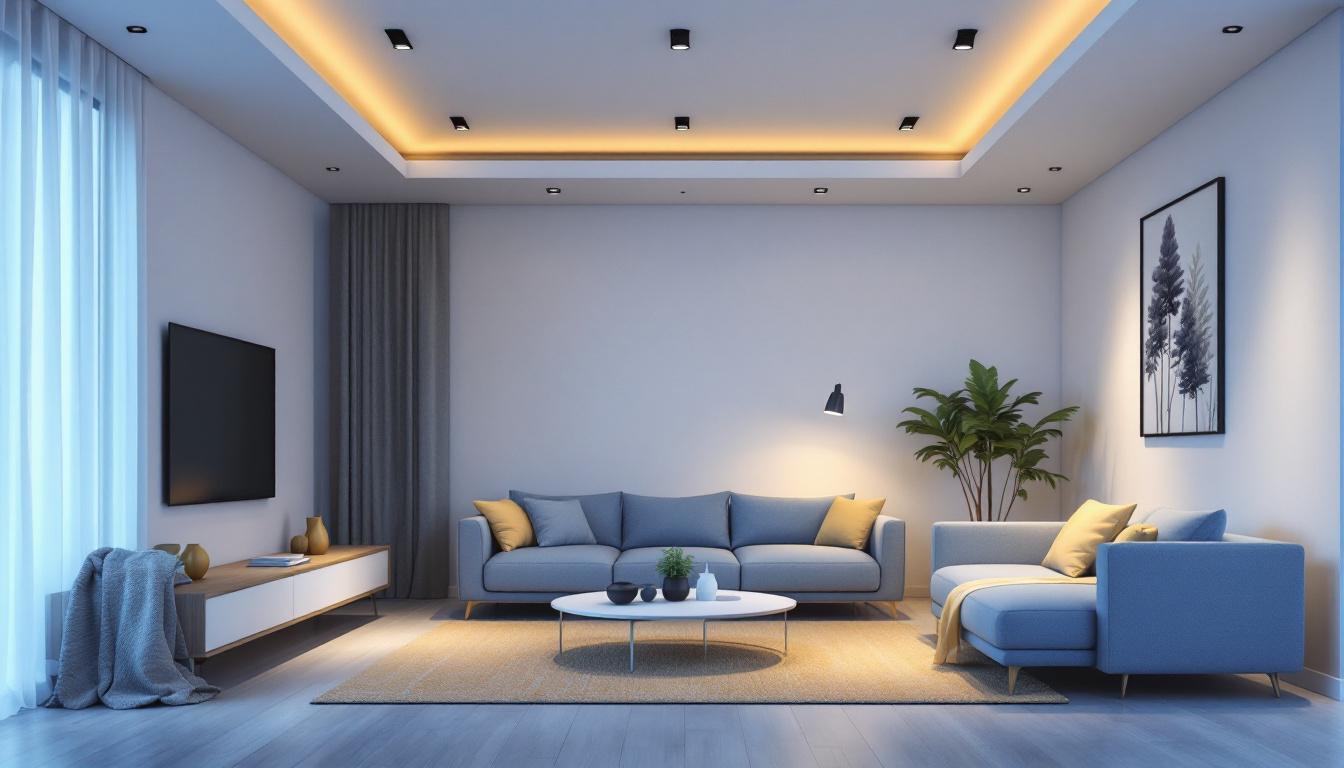
Lighting is an essential aspect of any building, influencing both functionality and aesthetics. For lighting contractors, understanding lamp fixture replacement parts is crucial for maintaining and upgrading lighting systems. This comprehensive handbook aims to provide valuable insights into the various components, their functions, and best practices for replacement and installation.
Lamp fixtures are more than just decorative elements; they are integral to the overall lighting design. A lamp fixture consists of several components that work together to provide illumination. Familiarity with these parts is essential for any lighting contractor aiming to deliver quality service. The right fixture can dramatically alter the ambiance of a space, making it crucial to understand the nuances of each type and its components.
There are several types of lamp fixtures, each designed for specific applications. Common types include ceiling fixtures, wall sconces, and pendant lights. Each type has unique characteristics that dictate the replacement parts required. For instance, recessed lighting fixtures are designed to be installed within the ceiling, providing a clean and modern look while maximizing floor space. These fixtures often require specific trims and housings that can accommodate different bulb types, making it essential for contractors to be well-versed in their installation and maintenance.
Ceiling fixtures, for example, often include components such as mounting brackets and diffusers. In contrast, wall sconces may require different types of electrical connections and shades. Understanding these distinctions helps contractors choose the right parts for each job. Additionally, track lighting systems offer versatility, allowing for adjustable positioning of lights to highlight specific areas or artwork, further emphasizing the importance of knowing the various fixture types and their applications.
Most lamp fixtures share common components, including sockets, bulbs, and wiring. The socket is the part that holds the bulb in place and connects it to the electrical supply. Bulbs come in various types, such as incandescent, LED, and fluorescent, each with its own specifications. The choice of bulb can significantly affect energy consumption and the quality of light produced, which is why contractors need to stay informed about the latest advancements in lighting technology.
Wiring is another critical component, as it ensures the electrical current flows safely to the fixture. Contractors must be familiar with different wiring types and their applications to ensure compliance with safety standards. Moreover, the installation of dimmers and smart lighting systems has become increasingly popular, allowing users to control the intensity and color of light, which adds another layer of complexity to the wiring process. Understanding how to integrate these technologies into existing fixtures can set a contractor apart in a competitive market, showcasing their ability to adapt to modern lighting trends.
Identifying the correct replacement parts for lamp fixtures can be a daunting task, especially when dealing with older models. However, understanding how to source and identify these parts is essential for efficient repairs and upgrades. The process often involves a careful examination of the fixture’s design and functionality, as well as an assessment of the specific needs of the space where the lamp will be used. This attention to detail not only ensures compatibility but also enhances the overall aesthetic and performance of the lighting solution.
Replacement parts can vary widely depending on the fixture type and manufacturer. Common parts include sockets, bulbs, shades, and mounting hardware. Each of these components may have specific requirements, such as wattage ratings or compatibility with certain bulb types. For example, LED bulbs have different base types compared to incandescent bulbs, and using the wrong type can lead to poor performance or even damage to the fixture.
When sourcing replacement parts, it’s crucial to consider the fixture’s specifications. For instance, using a socket rated for a higher wattage than the fixture can handle may lead to overheating and potential hazards. Moreover, the choice of shade can significantly affect the quality of light emitted, with materials like glass or fabric offering distinct advantages in terms of diffusion and style. Understanding these nuances can help contractors make informed decisions that enhance both safety and functionality.
Lighting contractors have several options for sourcing replacement parts. Local electrical supply stores often carry a range of components, from basic sockets to specialized fixtures. Additionally, online retailers provide a vast selection, often including hard-to-find parts. Websites dedicated to lighting supplies can be particularly useful, as they often feature detailed specifications and compatibility information, making it easier to find the right match for any project.
Contractors should also consider reaching out to manufacturers directly, especially for proprietary parts. Many manufacturers offer support and resources to help contractors find the right components for specific fixtures. In some cases, manufacturers may even provide technical assistance or installation guides that can simplify the replacement process. Furthermore, joining professional networks or forums can offer valuable insights and recommendations from peers who have faced similar challenges, fostering a community of shared knowledge and resources that can be incredibly beneficial in the quest for the perfect replacement part.
Replacing lamp fixture parts requires not only knowledge of the components but also adherence to best practices to ensure safety and functionality. Following established guidelines can help prevent issues down the line.
Safety is paramount when working with electrical fixtures. Contractors should always disconnect power before beginning any replacement work. Using a voltage tester can help ensure that the fixture is not live, reducing the risk of electrical shock.
Additionally, wearing appropriate personal protective equipment (PPE) is essential. This may include gloves, safety glasses, and hard hats, especially when working in commercial settings where overhead hazards may be present. It’s also advisable to keep a first aid kit readily accessible on-site, as minor accidents can occur even with the best precautions in place. Furthermore, ensuring that the workspace is well-lit and free of clutter can significantly reduce the likelihood of slips and falls, which are common hazards in electrical work.
Using the right tools is critical for efficient and effective replacement work. Essential tools for lamp fixture replacement may include screwdrivers, pliers, wire strippers, and multimeters. Each tool serves a specific purpose, aiding in tasks such as removing old fixtures, stripping wires, and testing electrical connections.
Moreover, employing proper techniques during installation can enhance the longevity and performance of the fixture. For example, ensuring that all connections are tight and secure can prevent issues such as flickering lights or complete fixture failure. Additionally, it is important to follow the manufacturer’s instructions closely, as different fixtures may have unique requirements for installation. Familiarizing oneself with the specific wiring diagrams and mounting hardware can streamline the process and ensure that the fixture operates as intended. Regularly checking for updates or recalls on fixtures can also be beneficial, as manufacturers may provide new information that could enhance safety and efficiency.
In addition to replacing parts, many lighting contractors also focus on upgrading lamp fixtures to improve efficiency and aesthetics. Upgrades can range from simple bulb replacements to complete fixture overhauls, depending on the client’s needs.
Upgrading lamp fixtures can offer numerous benefits, including improved energy efficiency and enhanced lighting quality. For instance, replacing incandescent bulbs with LED options can significantly reduce energy consumption, leading to lower utility bills.
Furthermore, modern fixtures often come with advanced features such as dimming capabilities and smart technology integration. These upgrades not only improve functionality but also increase the overall value of the property.
When considering upgrades, contractors should evaluate the specific needs of the space. Factors such as the type of activities performed in the area, existing electrical infrastructure, and the client’s budget all play a role in determining the best upgrade options.
Consulting with clients about their preferences and requirements can lead to more tailored solutions. For example, a client may prefer warm lighting for residential spaces while opting for brighter, cooler tones in commercial environments.
Regular maintenance of lamp fixtures is essential for ensuring their longevity and performance. Contractors should educate clients on proper care and maintenance practices to minimize the need for frequent replacements.
Conducting routine inspections can help identify potential issues before they escalate. Contractors should recommend clients check fixtures for signs of wear, such as frayed wires or burnt-out bulbs, and address these issues promptly.
Additionally, cleaning fixtures regularly can enhance their performance. Dust and debris can accumulate on lamps and shades, diminishing light output and affecting aesthetics. Simple cleaning techniques can go a long way in maintaining the appearance and functionality of fixtures.
Keeping detailed records of maintenance activities can be beneficial for both contractors and clients. Documentation can include information about inspections, repairs, and replacements performed on fixtures. This record can help track the lifespan of components and inform future maintenance schedules.
Moreover, having a maintenance log can assist in warranty claims and provide valuable insights for future upgrades or replacements. It serves as a reference point for contractors to evaluate the performance of various fixtures over time.
Understanding lamp fixture replacement parts is vital for lighting contractors aiming to provide high-quality service. From identifying components to adhering to safety practices, knowledge in this area can enhance the efficiency and effectiveness of any lighting project.
Moreover, staying informed about the latest trends and technologies in lighting can further empower contractors to offer innovative solutions to their clients. By prioritizing maintenance and upgrades, contractors can ensure that their clients enjoy optimal lighting experiences for years to come.
In an industry that continually evolves, keeping up with advancements in lamp fixtures and replacement parts will position contractors as trusted experts in their field. This handbook serves as a foundational resource, guiding lighting professionals through the complexities of lamp fixture replacement and installation.
Ready to elevate your lighting projects with the highest quality fixtures and replacement parts? Look no further than LumenWholesale, where we provide lighting contractors with spec-grade products at unbeatable wholesale prices. Our extensive selection not only meets but exceeds industry standards, ensuring you deliver reliable and high-performance lighting solutions. Plus, with free shipping on bulk orders, you can stock up on premium lighting without the worry of hidden fees. Don’t let inflated markups dim your project’s potential. Visit LumenWholesale today and discover the perfect blend of quality, affordability, and convenience for all your lighting needs.

Discover the ultimate guide to upgrading your lighting with recessed lights retrofit.

Discover the essential resources and expert tips lighting contractors need to master the use of metal halide lamps.

Discover the must-have yard light pole tools that every lighting contractor needs to enhance outdoor spaces.

Discover the essential insights lighting contractors need about metal halide lamps, from their energy efficiency and lifespan to installation tips and safety considerations.